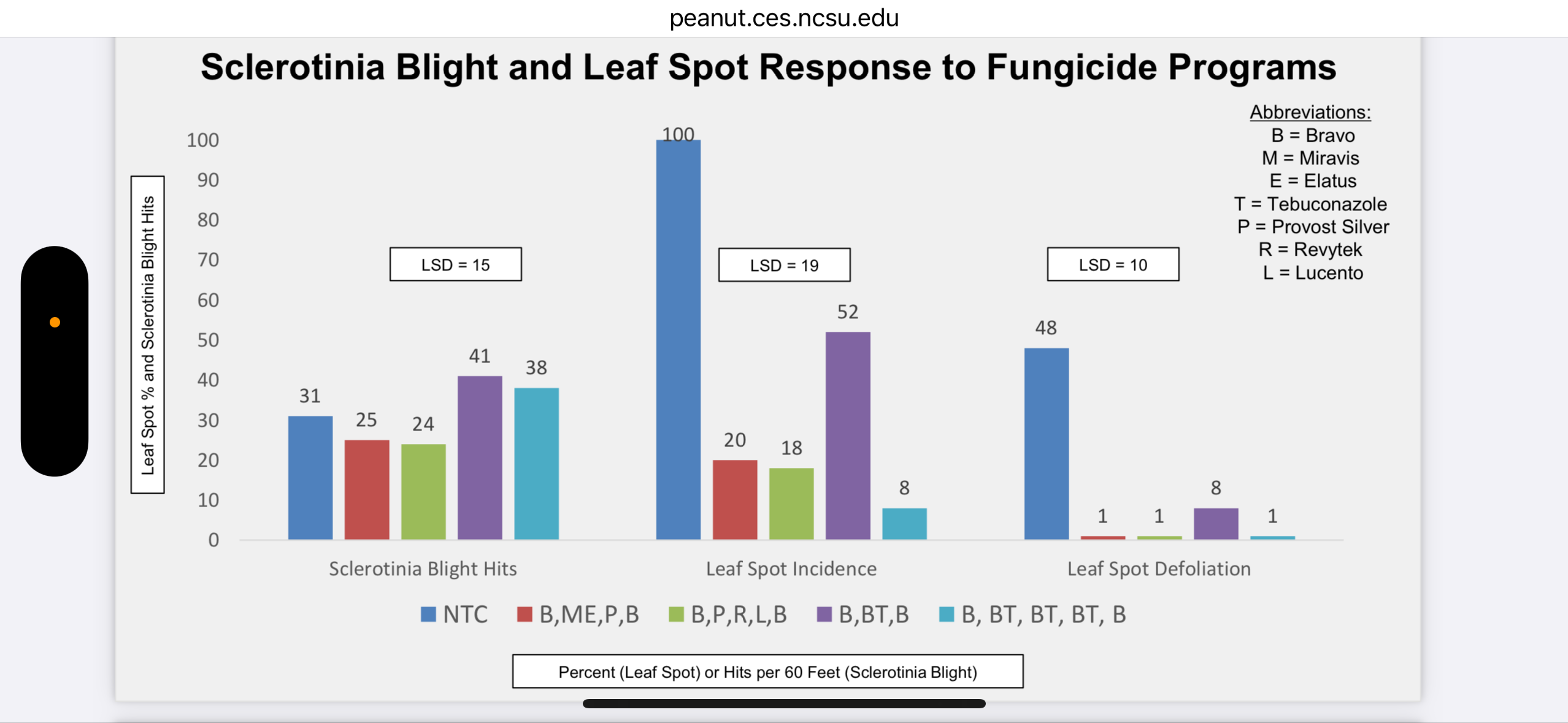Chlorothalonil and Sclerotinia Blight Peanut Notes No. 228 2024
go.ncsu.edu/readext?1026165
en Español / em Português
El inglés es el idioma de control de esta página. En la medida en que haya algún conflicto entre la traducción al inglés y la traducción, el inglés prevalece.
Al hacer clic en el enlace de traducción se activa un servicio de traducción gratuito para convertir la página al español. Al igual que con cualquier traducción por Internet, la conversión no es sensible al contexto y puede que no traduzca el texto en su significado original. NC State Extension no garantiza la exactitud del texto traducido. Por favor, tenga en cuenta que algunas aplicaciones y/o servicios pueden no funcionar como se espera cuando se traducen.
Português
Inglês é o idioma de controle desta página. Na medida que haja algum conflito entre o texto original em Inglês e a tradução, o Inglês prevalece.
Ao clicar no link de tradução, um serviço gratuito de tradução será ativado para converter a página para o Português. Como em qualquer tradução pela internet, a conversão não é sensivel ao contexto e pode não ocorrer a tradução para o significado orginal. O serviço de Extensão da Carolina do Norte (NC State Extension) não garante a exatidão do texto traduzido. Por favor, observe que algumas funções ou serviços podem não funcionar como esperado após a tradução.
English
English is the controlling language of this page. To the extent there is any conflict between the English text and the translation, English controls.
Clicking on the translation link activates a free translation service to convert the page to Spanish. As with any Internet translation, the conversion is not context-sensitive and may not translate the text to its original meaning. NC State Extension does not guarantee the accuracy of the translated text. Please note that some applications and/or services may not function as expected when translated.
Collapse ▲We are getting questions about applying chlorothalonil to end our leaf spot spray programs and how much risk that creates for flaring Sclerotinia blight. One or two sprays during the season does not create a substantial risk for inducing more Sclerotinia blight above what is already present. We do caution that 3 or more sprays of chlorothalonil can set up a situation where Sclerotinia blight could increase relative to fungicide programs with less or no chlorothalonil.
At last year’s “Late-Season Disease and Harvest Tour” in late September at Lewiston-Woodville, we had a lot of Sclerotinia blight. We clearly saw more of this disease with the more intensive chlorothalonil spray programs. Dr. Langston at VT, and Dr. Lux and I, were in general agreement that one or two sprays of chlorothalonil is not catastrophic when it comes to Sclerotinia blight. I recall Dr. Shew making a similar statement.
This slide demonstrates this point. For more details, take a look at Peanut Notes No. 149 2024.



